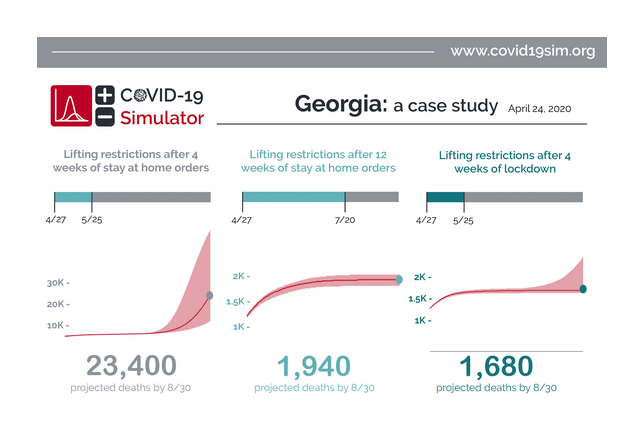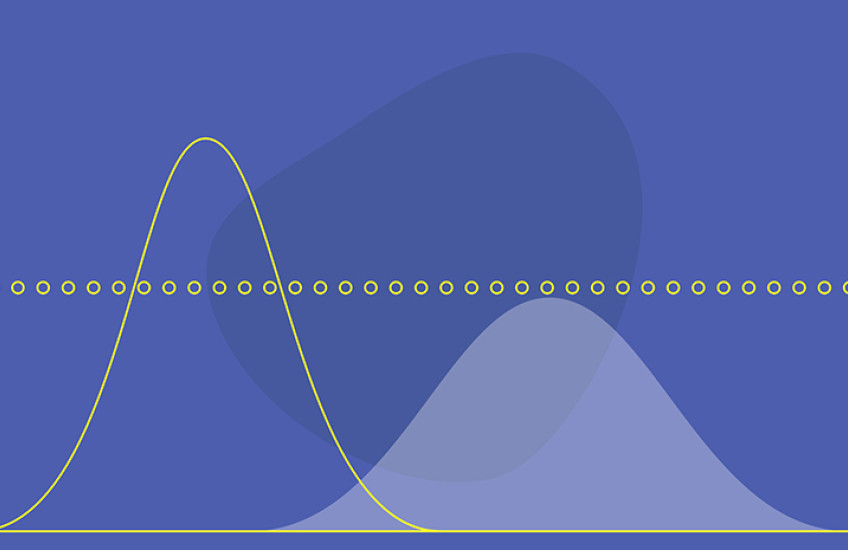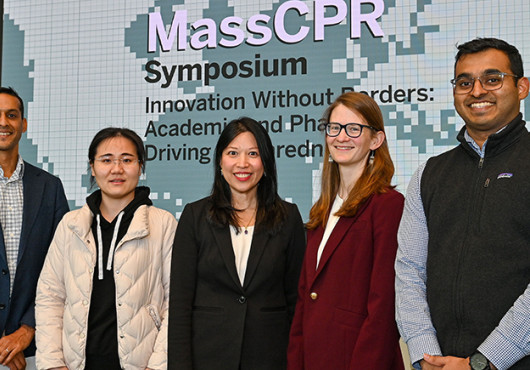A new online tool called COVID-19 Simulator, can help policymakers see how lifting or extending different social-distancing measures at various times can impact each state in terms of COVID-19 cases, hospitalizations and deaths.
Developed by Harvard Medical School researchers based at Massachusetts General Hospital and researchers at the Georgia Institute of Technology, the simulator uses the most recent data for each state and infectious disease modeling and offers different scenarios for interventions. These include interventions with varying time frames, such as lifting restrictions, extending a stay-at-home order and implementing a lockdown.
The model articulates consequences such as the rate of new cases, potential strain on the health care system, and projected deaths for each intervention.
“Policymakers need to make decisions quickly—our analysis shows that even a week’s time can have a huge impact on the future trajectory of COVID-19. We developed the COVID-19 Simulator to inform such key decisions under this highly uncertain environment,” said lead investigator Jagpreet Chhatwal, HMS assistant professor of radiology and a senior scientist at the Mass General Institute for Technology Assessment.
The COVID-19 Simulator can be used to analyze data at the state level, for a view of trends in one state under different intervention policies; to run state-by-state comparisons, for a view of trends in multiple states at the same time under different intervention policies; and analyses at the national level, for a view of trends for the United States as a whole under different intervention policies.
Second wave
Results indicate that lifting restrictions too soon can result in a second wave of infections and deaths.
Georgia opened some businesses on April 27th. The tool shows that COVID-19 is not yet contained in Georgia and even lifting restrictions gradually over the next month can result in over 23,000 deaths.

Keeping current restrictions in place until July can contain the epidemic and could result in about 2,000 deaths.
On the other hand, instead of a 12-week stay-at-home order that could have an impact on the economy, a more restrictive lockdown of the state for 4 weeks could have the best outcome in terms of saving lives and could prepare Georgia to open businesses as soon as May 25.
The tool’s creators noted that because there are several unknowns about COVID-19, developing a prediction model is not easy.
“The COVID-19 Simulator innovatively combines epidemiological and statistical modeling to utilize best evidence as it arises, and we plan to continue to advance our approach as we learn more about the disease,” said Turgay Ayer, the George Family Foundation Early Career Professor in the H. Milton Stewart School of Industrial and Systems Engineering and the director of business intelligence and healthcare analytics at the Center for Health and Humanitarian Systems at the Georgia Institute of Technology.
Adapted from a Mass General news release.
Image: Getty Images






